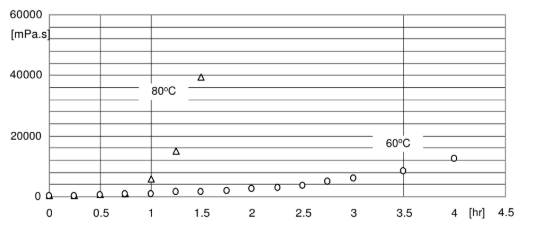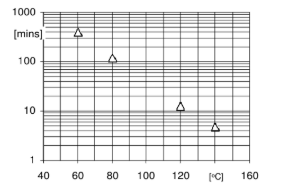Enhanced TDS
Identification & Functionality
- Chemical Family
- RTU Product Type
- Technologies
- Product Families
Features & Benefits
- Ready-to-Use Product Features
- Product Highlights
Prefilled system with very good mechanical and electrical properties.
- Product Features
- Very good mechanical and electrical properties.
- Good temperature shock resistance.
- Use of silanized fillers enhances stability of dielectrical properties under
- high-humidity conditions.
- Very good resistance to erosion by UV radiation.
Applications & Uses
- Composites Processing Methods
- Cure Method
- Product End Uses
- System Preparation
General instructions for preparing liquid resin systems
The following is the suggested preheat temperature of ARALDITE Resin and ARADUR Hardener.
ARALDITE resin: 50°C for 6 to 12 hrs
ARADUR hardener: room temperature
Mix all of the components together very thoroughly (the mixture temperature will be reached at or about 60°C. If lower mix viscosity is expected, preheat resin at higher temperature but not exceed 80°C) under vacuum. Proper mixing will result in:- Better flow properties and reduced tendency to shrinkage
- Lower internal stresses and therefore improved mechanical properties on object
- Improved partial discharge behaviour in high voltage applications.
For the mixing of medium to high viscous ARALDITE casting resin systems and for mixing at lower temperatures, it is recommended special thin film degassing mixers that may produce additional self-heating of 10-15°C as a result of friction. For low viscous ARALDITE casting resin systems, conventional anchor mixers are usually sufficient.
In larger plants, two pre-mixers are used to mix the individual components (resin, hardener) under vacuum. Metering pumps then feed these premixes to the final mixer or a continuous mixer. The individual premix can be stored at elevated temperature (about 60°C) for up to about 1 week, depending on formulation. Intermittent agitation during storage is advisable to prevent filler sedimentation. Mixing time can vary from 0.5 to 3 hours, depending on mixing temperature, quantity, mixing equipment and the particular application. The required vacuum is 0.5 to 8 mbar. The vapour pressure of the individual components should be taken into account.
- Applications
Outdoor electrical insulation material for medium and high voltage application, such as current and potential transformers ... etc.
Properties
- Processing Viscosities

Fig.4.1: Viscosity increase at 60 and 80°C (measurements with Brockfield)
Technical Details & Test Data
- Specific Instructions
Dilute leftover mix at the end of a shift with the resin component prior to storage overnight or over the weekend. Piping containing prefilled components or casting mixes should be cooled immediately after work to prevent sedimentation and/or undesired viscosity increases. This helps minimize material losses and cleaning work.
Viscosity increase and gel time at various temperatures
Mould temperature
APG process : 130 - 160°C
Conventional vacuum casting : 70 - 100°C
Demoulding times (depending on mould temperature and casting volume)
APG process : 10 - 40 min
Conventional vacuum casting : 5 - 8h
Cure conditions
APG process (minimal postcure) : 4h at 130°C or 3h at 140°C
Conventional vacuum casting : 12h at 130°C or 8h at 140°C
To determine whether crosslinking has been carried to completion and the final proper-ties are optimal, it is necessary to carry out relevant measurements on the actual object or to measure the glass transition temperature. Different gel and postcuring cycles in the manufacturing process could influence the crosslinking and the glass transition temperature respectively.- Mechanical & Physical Properties
System tested:
ARALDITE® CW 5837 VN / ARADUR® HY 5836 VN
Mix ratio: 100 / 20
Determined on standard test specimen at 23°C
cured for 6h at 80°C + 8h at 130°CProperty
Test Method
Unit
Value
Tensile strength
ISO R 527
N/mm²
ca. 85
Elongation at break
ISO R 527
%
ca. 1.3
E modulus from tensile test
ISO R 527
N/mm²
ca. 11500
Flexural strength at 25°C
ISO 178
MPa
ca. 150
Elongation at 25°C
ISO 178
%
ca. 1.7
E modulus from flexural test
ISO 178
MPa
ca. 12000
Critical stress intensity factor (Kₐ)
MPa·m½
ca. 2.8
Specific energy at break (Gₐ)
J/m²
ca. 600
Glass transition temperature (DSC)
IEC 1006
°C
73 - 88
CTE
TMA
ppm/K
ca. 35
Thermal conductivity
ISO 8894/90
W/mK
ca. 0.9
Water absorption (specimen: 50x50x4 mm)
ISO 62
% by wt.
0.10 - 0.20 (10 days at 23°C)
Water absorption (specimen: 50x50x4 mm)
ISO 62
% by wt.
0.08 - 0.15 (60 min at 100°C)
Density (Filler load: 62% by wt.)
DIN 55990
g/cm³
ca. 1.8
Breakdown strength
IEC 243-1
kV/mm
18 - 20
Tracking resistance
IEC 112
CTI
>600M-0.0
- Gelation / Cure Time

Fig.4.2:Geltime measured with Gelnorm Instrument as a function of temperature
(DIN 16945/6.3.1)
Storage & Handling
- Storage Conditions
- Prefilled liquid product always shows small filler sedimentation.
- Before partial use we recommend to stir up carefully the components or to use each container as complete unity.
- Store the components dry at 6-28°C(resin) and 10-40°C(hardner), in tightly sealed original containers. Under these conditions, the shelf life will correspond to the expiry date stated on the label. After this date, the product may be processed only following reanalyzes. Partly emptied containers should be tightly closed immediately after use.
Other
- Application Information
Value Units Test Method / Conditions Mix Ratio 0.2 %(W) %(W) Hardener : Resin
